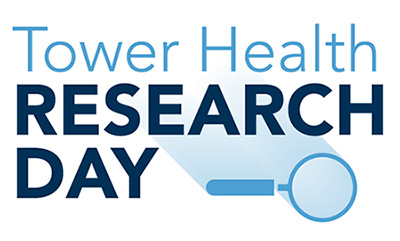Keywords:
Epstein Barr virus, Elevated liver enzymes, Cholestasis, Non-hepatotropic virus
Start Date
14-10-2021 10:45 AM
End Date
14-10-2021 11:45 AM
Recommended Citation
Paudel, Anish, "Epstein-Barr Virus-induced Cholestasis: A mimic of Primary Biliary Cholangitis in middle-aged females" (2021). Tower Health Research Day. 23.
https://scholarcommons.towerhealth.org/th_researchday/2021/postersessionII/23
Image:1 Atypical lymphocytes in peripheral blood smear:
Epstein-Barr Virus-induced Cholestasis: A mimic of Primary Biliary Cholangitis in middle-aged females
Epstein-Barr Virus-induced Cholestasis: A mimic of Primary Biliary Cholangitis in middle-aged females
Background Epstein-Barr Virus (EBV) is a non-hepatotropic virus that is known to cause acute hepatitis, usually manifesting with elevated transaminases, but rarely it presents with markedly elevated Alkaline Phosphatase (ALP) and symptoms of cholestasis in the absence of the classic features of infectious mononucleosis. We present a case of EBV-induced cholestatic hepatitis in a middle-aged female. Case report A 54-year-old female with a medical history of Factor V Leiden mutation presented to the Emergency Department with two weeks history of progressive fatigue and pruritus. She reported associated decreased appetite and mild headache but no fever or abdominal pain. Her review of systems was otherwise negative. Significant examination finding includes scleral icterus, excoriation marks, and tender cervical lymphadenopathy. Relevant laboratory findings were leukocytosis with lymphocytosis and atypical lymphocytes on the blood smear, mildly elevated sedimentation rate 49 mm/hr and C-reactive protein 1.14mg/dl, positive EBV IgM antibody, high EBV DNA quantification 1030 copies/ml, markedly elevated ALP 747 (34-104 IU/L) and Gamma Glutamyl transferase (GGT) 349 (9-64 IU/L), elevated Aspartate Transaminase (AST) 99 (13-39IU/L) and Alanine Transaminase 133 (7-52IU/L). Acute hepatitis panel (hepatitis B surface antigen, hepatitis B core IgM antibody, hepatitis A IgM antibody, hepatitis C antibody) and anti-mitochondrial(M2) antibody were negative. Computed tomography (CT) of the abdomen/pelvis, Magnetic Resonance Cholangiopancreatography (MRCP), and chest radiograph were unremarkable. She received symptomatic treatment and improved; one-month follow-up laboratory tests revealed normal liver function tests. Conclusion The markedly elevated ALP and GGT in a middle-aged female with pruritus and fatigue often raises our suspicion of primary biliary cholangitis or an obstructive hepatobiliary etiology, prompting further expensive and sometimes invasive investigations. A physician should include EBV serology during the initial work-up of patients with cholestasis, especially those with unusual presentation.


